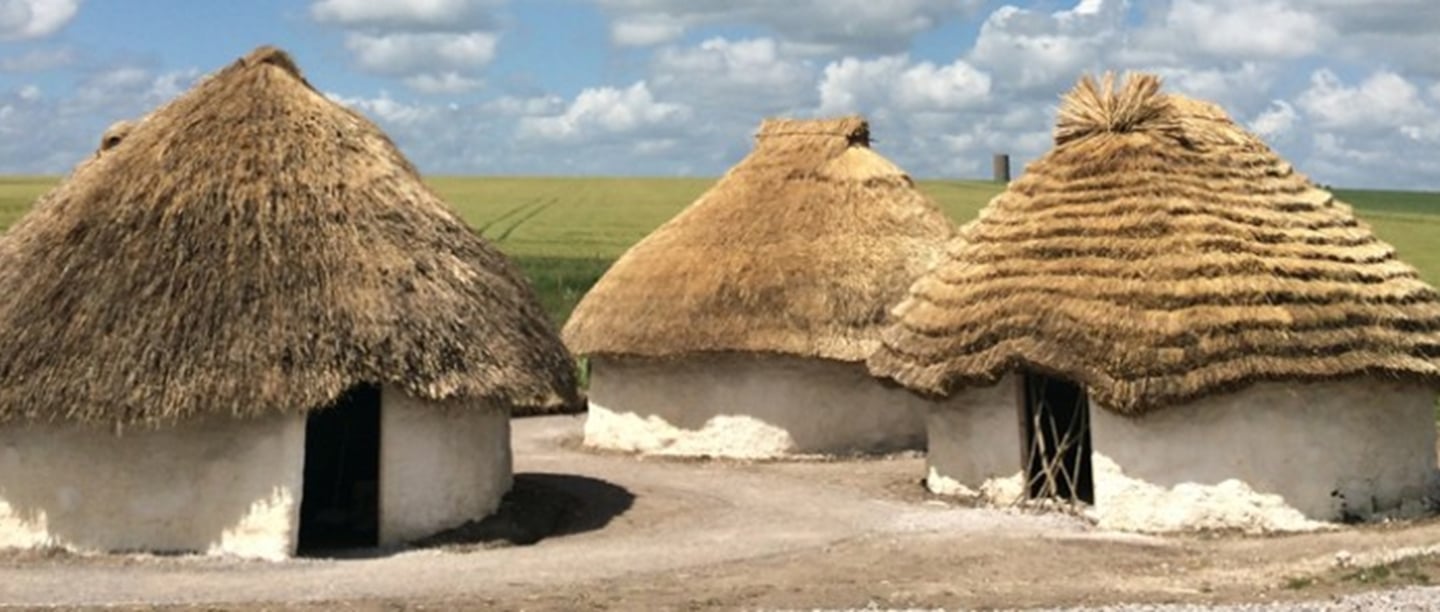
English Heritage historian Susan Greaney answers a question from Radlett Preparatory School, who visited Stonehenge on a school trip.
There’s actually no such thing as a ‘caveman’ – it’s just an old-fashioned term that people sometimes use when referring to hunter-gatherers and early farmers of the Stone Age. So what we really need to ask is – did these early prehistoric people live in caves?
The short answer is that some of them probably did, some of the time and at some stages of the Stone Age. But the full answer is much more complex.
There is evidence in the Palaeolithic (‘Old Stone Age’) that as people moved about from place to place with the seasons, they definitely used caves, cooked in them and even put cave art on the walls. This seems to have been particularly the case towards the end of the Ice Age when people were coming back into Britain after the ice sheets had retreated. A very good example can be found at Creswell Crags, near Sheffield.
Caves make useful and convenient shelters – and not just for people. We know that animals, such as hyaenas, wolves and bears would probably have sheltered in them too. When this was the case, they would not have been such an appealing or safe haven for humans.
There are a few sites in Britain where caves were lived in and also where people were buried – in the case of the Red Lady of Paviland, in a cave on the Gower peninsula in South Wales.
But, there are not that many caves in Britain and the vast majority of Stone Age people would not have lived in caves.
So where did they live? Well the answer is different depending on where in Britain and what period of the Stone Age we are talking about.
The Stone Age is divided into 3 sub-periods – the Paleo(old)lithic, the Mes(mid)olithic and the Neo(new)lithic.
Old and Middle Stone Age – camps
For the Palaeolithic and the Mesolithic, archaeologists assume that people lived in camps of temporary structures – ‘bender huts’ made of hazel bend over in a circle and covered in animal skins, or other types of wooden shelters. This assumption is made based on lack of evidence rather than evidence itself – as structures like these would not survive in the archaeological record.
There are a few houses that do survive from the Mesolithic – examples of which are known from Howick, Northumberland and Star Carr in Yorkshire These are more substantial tipi shaped structures – the one at Howick has been reconstructed.
A reconstruction drawing of how the prehistoric village of Durrington Walls might have looked in 2500BC.
Early New Stone Age – large buildings
In the early Neolithic, there is evidence of some quite large timber domestic buildings sometimes referred to as halls. Examples have been excavated at Horton in Berkshire, White Horse Stone in Kent, and a very recent and as yet unpublished excavation on Dorstone Hill in Herefordshire. These all date from the earliest Neolithic (around 4000-3600BC ). Recent archaeological excavations in Ireland have revealed huge numbers of these timber houses or halls, which might have been communal buildings.
Following on from these buildings there is no evidence of houses for a very long time and therefore an assumption is made that people were living again in camps, and temporary shelters . Although it’s possible that archaeologists just haven’t found the houses from this period yet!
The next structures appear in the late Neolithic – around 3000 BC in Orkney (e.g. Skara Brae) and around 2500 BC at Durrington Walls and Marden, both in Wiltshire. It is the buildings at Durrington Walls on which we have based the Neolithic houses that we have built at Stonehenge.
There is then very little evidence of houses until we reach the middle Bronze Age – around 1500BC. From then on, there is lots of evidence of big field systems, houses and settled farms.
Interior of one of the recreated Neolithic Houses at Stonehenge
Neolithic Houses at Stonehenge
Recreated Neolithic houses have now opened at Stonehenge, revealing the type of homes the builders of the ancient monument might have lived in four and half thousand years ago. Visitors can step through the doors of these houses and get a real sense of what everyday life might have been like when Stonehenge was built.
Find out more about how the people who built Stonehenge might have lived here.